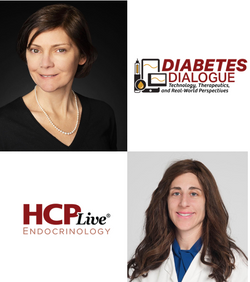
OR WAIT null SECS
Reviewing New Molluscum Therapies, with Nanette B. Silverberg, MD
The FDA approved the first 2 therapies to treat molluscum contagiosum in the last year. Silver explains how it's provided more than just treatment options.
Over the last 9 months, a landmark development was made in the treatment of one of the most common skin diseases in children—and it happened twice. The US Food and Drug Administration (FDA) approved cantharidin formulation 0.7% w/v (VP-102; YCANTHE) as the first indicated treatment of molluscum contagiosum in July 2023. Then this January, the agency approved topical berdazimer gel 10.3% (Zelsuvmi) for the viral skin disease as well.
It is difficult to overstate how long-awaited the advent of indicated molluscum therapies was; children aged 0 – 14 years old are associated with an incident rate of 12 – 14 episodes per 1000 children annually. Prior treatment recommendations were few and far between. As one expert said to HCPLive: “The message in pediatrics was always, ‘Let it ride, don’t do anything’.”
And now the paradigm is shifting.
In an interview leading up to the Society for Pediatric Dermatology (SPD) 2024 Annual Meeting in San Diego, CA, this week, Nanette Silverberg, MD, chief of pediatric dermatology at Mount Sinai Health System, discussed the long-awaited introduction of berdazimer gel and cantharidin to the once-dormant molluscum market. She said that approximately one-third of affected children experience difficult itching, another third experience other symptomatology, and even more being subjected to risk of psychosocial effects.
“Most kids have probably around a dozen lesions,” Silverberg said. “So, it can certainly be unsightly and emotionally scarring. The ability to treat with something that’s FDA-approved is very nice, and it helps us as a specialty to be able to provide scientifically-supported care to kids with molluscum.”
The previous armamentarium—beyond preaching patience to children and parents alike for the viral infection to clear over months and years—including off-label products and symptom-related salves. The makeshift solutions frequently come with hurdles: Silverberg noted how the COVID-19 pandemic-related supply shortages impacted her access to reliable doses of liquid cimetidine, shown to induce molluscum immunity in at-risk patients with atopic dermatitis.
Now with a pair of proven treatments in practice, Silverberg and colleagues have an opportunity to review their benefit and rework their treatment guidelines and patient-related goals. One opportunity in research may be interpreting a potential cross-disease benefit with agents like berdazimer that has shown an enhanced immune response in patients.
“There are needs that keep developing in our system and in the world at large, and one of the needs is also treating molluscum from the fact that it could trigger eczema,” Silverberg explained. Her team’s prior research suggested that approximately 1 in 10 children infected with molluscum around the age of 4 are at heightened risk of atopic dermatitis onset. It’s just one of many avenues of clinical research partly afforded by the breakthrough in marketed treatments.
“It would be nice to know if these agents, as we use them to treat molluscum in that critical time period, if we can prevent eczema onset,” Silverberg said. “There are a lot of data missing in the molluscum world that we can look forward to in the future.”
References
- Smith T. FDA Approves VP-102 for Molluscum Contagiosum. HCPLive. Published July 21, 2023. https://www.hcplive.com/view/fda-approves-vp-102-molluscum-contagiosum
- Smith T. FDA Approval of Topical Berdazimer Gel Announced for Molluscum Contagiosum. HCPLive. Published January 5, 2024. https://www.hcplive.com/view/fda-approval-of-topical-berdazimer-gel-announced-for-molluscum-contagiosum
Related Content:


